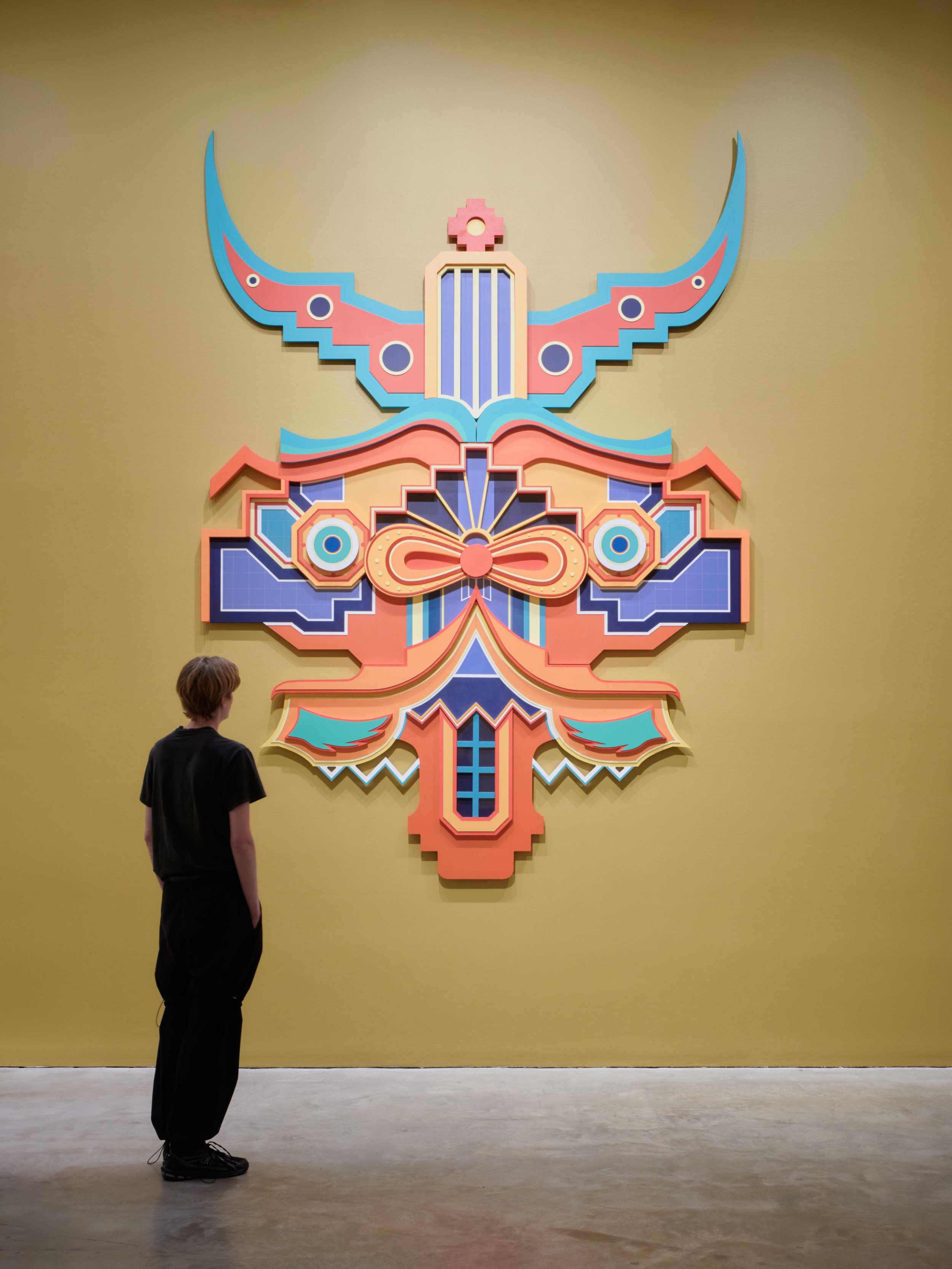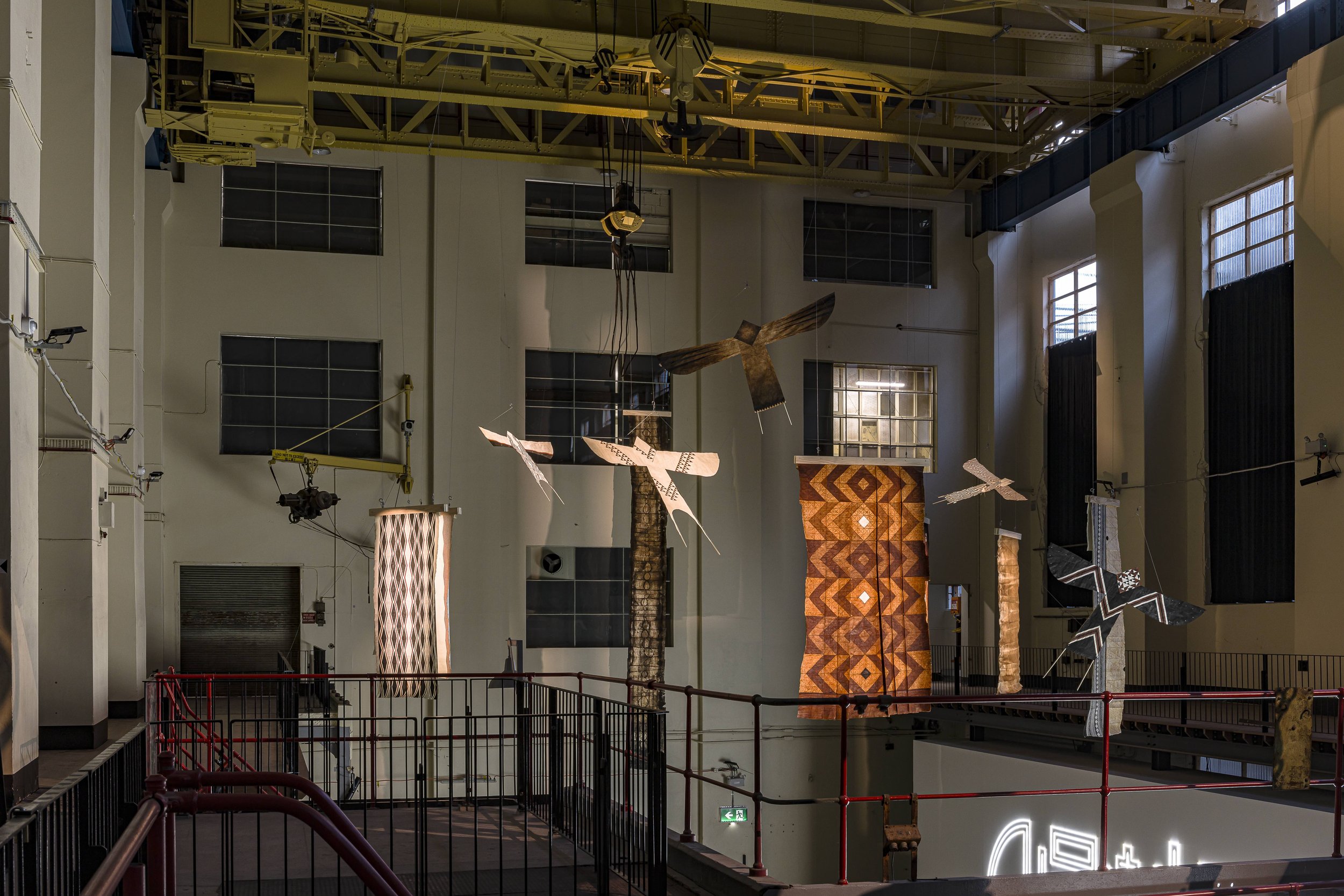Tony Albert, Erin Vink and Kimberley Moulton discuss curating First Nations art across borders
/In his role as the Fondation Cartier pour l’art contemporain First Nations Curatorial Fellow for the 24th Biennale of Sydney, Tony Albert commissioned works from Indigenous artists both in Australia and around the world. In the following conversation, he discusses opportunities for international collaboration between First Nations artists, curators and communities with Kimberley Moulton (Yorta Yorta), Senior Curator of Rising festival and Adjunct Curator, Indigenous Art at Tate Modern; and Erin Vink (Ngiyampaa), Curator of First Nations Art (local and global) at the Art Gallery of New South Wales (AGNSW) and Chair, Art Monthly Australasia.
Tony Albert (TA): Erin, your role has recently changed from Curator of Aboriginal and Torres Strait Islander Art to Curator, First Nations Art (local and global). Why is that an important transition within the title and within the institutional framework of caring for and acknowledging global Indigenous art?
Erin Vink (EV): My position shifted to include a global Indigenous remit about 12 months ago. It stemmed from a long, warm conversation I had with our shared colleague, Léuli Eshrāghi [Seumanutafa/Tautua], who undertook a three-month research review of the AGNSW in early 2020. Léuli prepared a report for the gallery on how to grow a collection, which also included other elements such as exhibition programming, positions and the like. I have taken Léuli’s initial proposal and reformatted it to become something that is achievable within the existing structures of the institutional model. I believe it is important that we have an outward-facing curatorial position demonstrating that we care for all Indigenous kin. Grounded in local First Nations art, we can adopt best practices for how to work with our global Indigenous artists, how to support community and how to respect language and cultural groups, for example.
TA: How would a work by an international First Nations artist be entered into the institution’s collection?
EV: At the AGNSW, prior to my role, artists would come into the collection through the international collection stream: into the Pacific collection, for example, if they were Indigenous from the Great Ocean, or Indigenous artists from Asia would go into the Asian art collection. Maybe their language group would be recorded on their catalogue record but, more often than not, none of the information that we, as Australian First Nations people record, would be assigned to their artwork. Now that I care for the global Indigenous collection, we treat international First Nations art as we would Australian First Nations work.
TA: Kimberley, you have previously done a fellowship at Kluge-Ruhe Aboriginal Art Collection at the University of Virginia with a focus on Indigenous Australian art.
Kimberley Moulton (KM): I was the recipient of the inaugural curatorial fellowship at the Kluge-Ruhe with the National Gallery of Australia and Wesfarmers Indigenous Arts Leadership Program in 2015 and have done several programs with other Indigenous curators to connect with mob internationally. I’ve been to Sápmi country, Norway, Sweden and Finland, North America and South Asia connecting to peers and kin. These opportunities were such a crucial time for me in thinking around how we communicate our culture, our art and what we’re doing in the world in connecting with other mob. These moments opened my world, connecting me with international Indigenous practice. It’s about building solid relationships based on relationality, and not necessarily just about exhibition and extraction, which often is the focus in the art world and museum spaces. This time of connecting led me to develop my practice and to consider how to create space for Indigenous artists and communities and build our own determined spaces.
TA: The dialogue amongst artists has gained international traction over the past few years, particularly with the aabaakwad (it clears after a storm), a series of Indigenous-led conversations founded in 2018 by Wanda Nanibush [Anishinaabe]. I am often surprised at how Australia is viewed internationally with regards to its First Nation dialogue: we as Indigenous Australians are seen as having infiltrated institutions, sometimes through force, to have our voices heard. I’m wondering if you could talk about the history attached to Indigenous curatorial practice and its contemporary presence on the global stage.
EV: There have been amazing movers and shakers that have carved out this space for us. If you put your finger on the pulse right now, what I find the most interesting is institutional curators who are all working to the idea of Indigenisation rather than decolonisation. We’re working in a way of adding culture to our institutions, and it doesn’t always have to be in the same way. We have the flexibility of experimentation due to the core work that our Indigenous curatorial leaders have done in overcoming roadblocks that they themselves experienced in curatorial positions in the 1990s and early 2000s.
TA: It is an interesting comment because we hear about decolonisation so much, and I’ve always been a fan of Indigenising space rather than decolonising space. We (as people) need to be in the institution and have autonomy to add to it.
KM: A lot of my early international research was connecting with and reserching our Ancestral Belongings in places like the British Museum. These places hold our material, but I was also trying to understand the ways in which artists, both Indigenous and non-Indigenous, connect within that space and with ‘museum’ objects. I learnt that we are always within this Oceanic grouping of people and came to understand and critically evaluate the legacy of homogenisation, ethnographic collecting and the effect of that on the way in which our contemporary art and practices are understood by non-Indigenous curators and anthropologists. My research has also led me to work deeply in the ways in which First Peoples artists can restore the spirit of collections and history through practice. More recently I have focused on more of a contemporary framework, working at the Tate Modern. However, I challenge the binary of historic and contemporary in my practice—it is all connected and relevant.
I believe having more Indigenous curators and artists engaging internationally and having roles with autonomy and responsibility that are engaged properly with institutions and their collections is important. There’s still work to be done, but the growing realisation within international art spaces and museums is that they need to work with Indigenous people, and that we need to have the position of leadership in terms of our contemporary art and determine the way our cultures are represented in these spaces. We need to also critically challenge the absence of our presence in art history in these places, which connects directly to current discourse in Indigenous-led research into theories of race, relationality and anti-colonial practice.
Whenever you work for any institution, there’s always this immense responsibility that you have to community and ancestors. It’s too much for one person to carry. I’ve worked in institutions for a long time now, and I’ve come to the realisation that you can care, and you can take that responsibility seriously, but you can’t carry the entire load of the history of Indigenous art and colonial ethnographic collecting to try and change or decolonise these spaces. I think my strategy going in, especially into my new role, was, okay, I can’t decolonise these big institutions, whatever that means. I don’t even believe in that anymore. Instead, it’s thinking that, if I’m here for however many years and I understand the current policies of acquisition, of exhibition, of the institution, then there can be a progression in the representation of First Nations people and a stronger focus on Indigenous art—and I can help the institution address that there has been a very large absence of that to date. Ultimately, I ask myself: how can I make the most impact for First Peoples artists and community in whatever I do?
This is an edited extract from a longer conversation that was published in Art Monthly Australasia’s special edition about the 24th Biennale of Sydney. Buy a copy of that issue here.




















